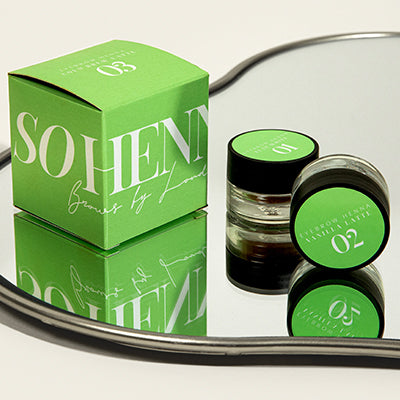FREE STANDARD SHIPPING FOR ORDERS OVER 99€!
FREE STANDARD SHIPPING FOR ORDERS OVER 99€!
NEW IN
Glues & Liquids
Eyelash Extensions
ACCESSORIES
So Henna

Does Quicker Lash Adhesive = Better Results?
октомври 07, 2024 2 min read
Does Faster Always Mean Stronger? Why the Strength of Rapid Lash Adhesive Actually Depends on Application Speed
You don’t need years of experience in the lash industry to come across other Lash Techs asking for the fastest drying, strongest adhesive thinking it’s the secret to quicker sets with better retention. Now, considering we’re approaching London Lash’s 10th anniversary, you can imagine how often this question comes up!
Our answer remains unchanged: just because a glue is fast doesn’t mean it creates the best hold. Here’s why:
Fast = Strong
What speeds up drying and strengthens glue comes from the same ingredient—cyanoacrylate. This is the key component in lash adhesives, so the higher the concentration, the quicker the glue will dry and the stronger the bond. Technically speaking, that is.
The Role of Humidity
Cyanoacrylate reacts with moisture, so the more humidity in the air, the quicker it sets. While temperature is also important, it’s often easier to notice shifts in temperature than subtle changes in humidity.
A high cyanoacrylate content combined with high moisture levels means your glue will cure very rapidly. That’s why we always check your room’s humidity and temperature when recommending the right lash adhesive for you. A Digital Hygrometer is a must-have from the start of your lash career.
Each adhesive has an ideal range of temperature and humidity for optimal performance, ensuring it dries at the advertised speed. Too much humidity for the glue you’re using will cause it to dry faster than expected.
Fast ≠ Strong
In reality, the more cyanoacrylate present, the faster it reacts and cures. However, quicker drying times can make the bond more fragile. If exposed directly to moisture, the glue might even "shock polymerize," leading to the white residue sometimes seen on lashes.
Let’s say your humidity is perfect, and the adhesive is drying as it should. Does this mean everything is great? Not necessarily.
If the glue dries faster than you can apply it, it will start to set before reaching the natural lash, resulting in a weaker bond—even if your environment is ideal and your prep work is flawless.
Instead, practice timing your dip and placement to match the glue’s drying speed, ensuring you pick the right adhesive for your pace.

The best adhesive for lash extensions is the one that creates a durable bond under your specific conditions and matches your application speed. While the desire for the fastest, strongest glue is common, using one that’s too quick can cost you clients if it doesn’t suit your technique.
Subscribe
Sign up to get the latest on sales, new releases and more …

























